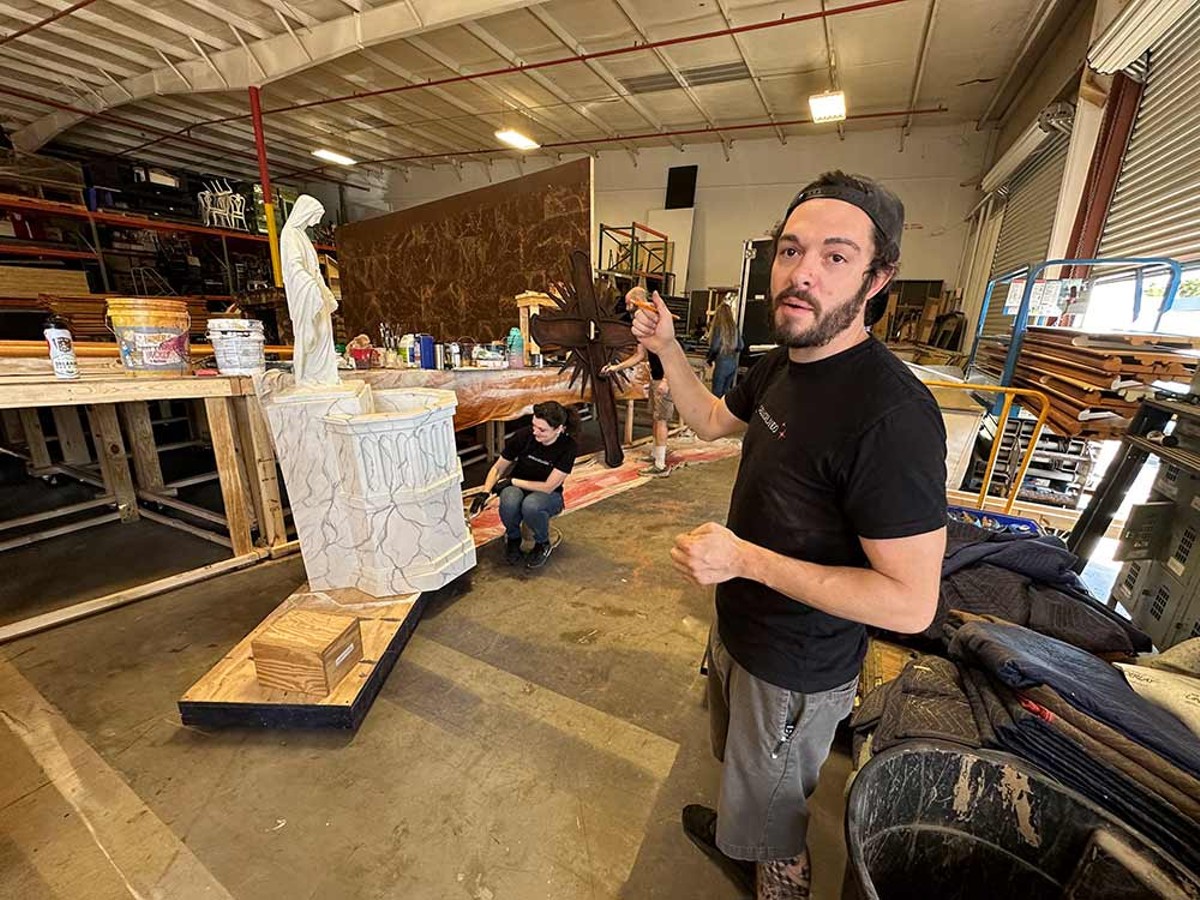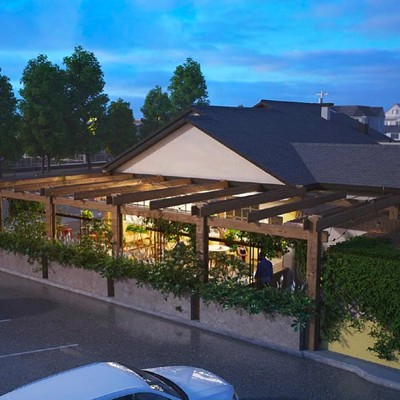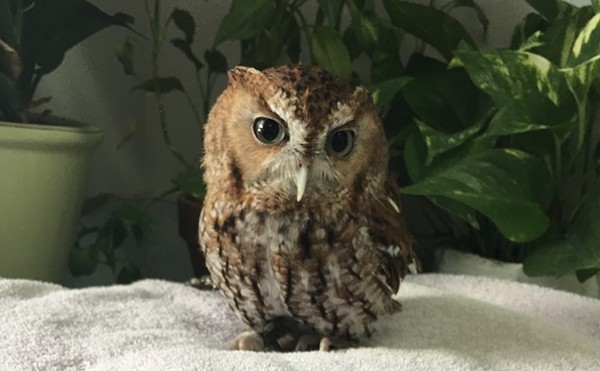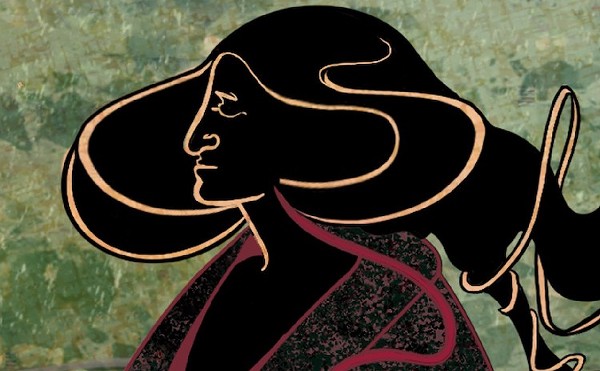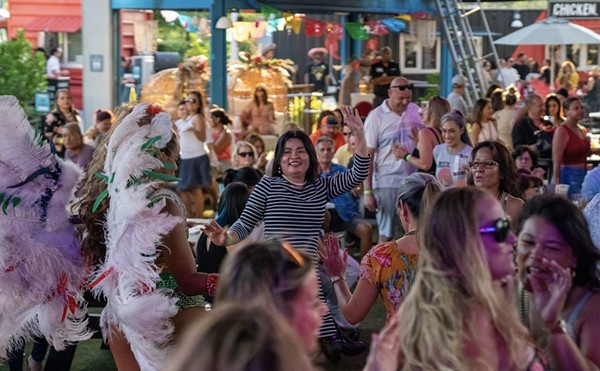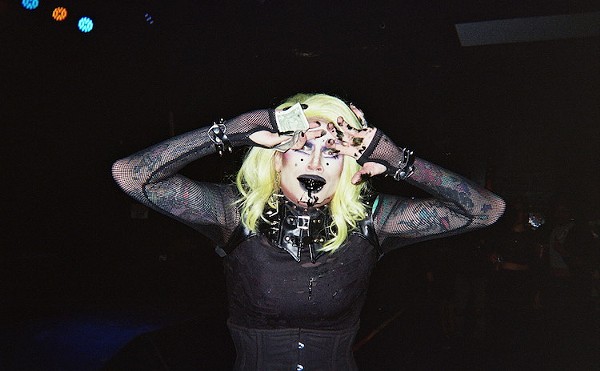The phrase "grand opera" conjures images of opulently dressed performers singing atop a monumental set, but few patrons truly consider the artistry and labor that goes into such epic entertainment. As the opening production of Opera Orlando's 2023-2024 season, the team behind the scenes of Tosca is taking on those expectations, and working day and night to raise the bar on production values for their shows Friday, Oct. 27, and Sunday, Oct. 29, in the Dr. Phillips Center's Steinmetz Hall.
I was recently invited to a media preview of the upcoming production in the massive warehouse off L.B. McLeod Road that Opera Orlando shares with the Orlando Ballet and Orlando Philharmonic, to witness the effort Tosca's design team is putting into bringing Puccini's classic tale set in Napoleonic Wars-era Rome to life. General director Gabriel Preisser welcomed a small group of press into a vestibule virtually packed with racks of costumes before introducing foreman Ty Bargfrede, who led us on our tour of his workshop.

Our first stop was in the costuming department, where wardrobe supervisor Cait Durrance and costume designer Jennifer Madison (with her infant in a baby sling) walked us through their process of combining rented pieces with new builds to create the 70-odd looks required for Tosca. On display were a richly textured red garment they'd acquired for the heroine's Act I outfit, and a complementary coat in mid-construction for the antagonist, Baron Scarpia.
The pair pay attention to period details on the surface, but must make concessions for quick costume changes: Beneath those dozens of dummy jacket buttons are concealed easy-open fasteners.
"I start with my ideas about the period, and what do I want, and then I start to pull from rentals and see what's available," says Madison, explaining her design process. "Depending on what options I have I start to pull builds and find fabrics, and the whole time I'm designing I have a shopping window open [because] time is very precious, so if you can buy, alter and decorate to make it work, you do it, because something is always going to pop up that needs to be built last-minute."
When asked by an aspiring young costumer in attendance how to pursue their career path, Durrance — a UCF alumna who considers herself "mostly self-taught" — recommended "just going for it [and] buying the supplies and just taking things apart, putting them back together." Madison added that she wouldn't advise focusing too narrowly on costuming as an undergraduate, but rather "take lots of art classes: drawing, painting, history. Anything that you find interesting is useful as a costumer." Surprisingly, the costumer's secret best friend these days is Amazon, according to Durrance, because "we can get [an item] immediately, and we can take a basic piece and then add on to it, alter as needed, and put it into the period."
Befitting the new season's "Art for All" theme, the Tosca set is framed on each side and from above by enormous artworks — up to 30 feet wide and 25 feet tall — inspired by the influential French critic Diderot, each with its own equally oversized gilt picture frame. (When I arrived, the crew was attempting to decipher which unlabeled roll contained which image without entirely unfurling them.) Though they seem substantial, the structures are actually made of lightweight foam with a poly coating that has been cleverly painted with a simulated patina.
The same can't be said of the weighty stage, a puzzle-like patchwork of pitched platforms that tilt at a wonky rake toward downstage left, crowned by a towering set of stairs. Ultimately, the off-kilter design should create a kind of forced perspective effect on the audience (and hopefully won't induce vertigo in the cast).
In order to build such an ambitious design in time to transport and install it (in collaboration Steinmetz's IATSE stagehands), Bargfrede and company have been burning the midnight oil. "I found a job that I could put those long hours and still love my life," he says, emphasizing that he's worked 70-hour weeks in order to complete previous projects for the Opera, but Tosca is the biggest build they've ever attempted.
"One of the most gratifying things for me is when we are finally on stage and have everybody in the audience be like, 'Oh my god!'" says Bargfrede. "They don't hear any of the whining and crying, they don't know any of it. They just see the success."
Season subscriptions, individual tickets, and day-of student rush seats to Tosca are available. Visit operaorlando.org for more information.
Location Details
Subscribe to Orlando Weekly newsletters.
Follow us: Apple News | Google News | NewsBreak | Reddit | Instagram | Facebook | Twitter | or sign up for our RSS Feed

